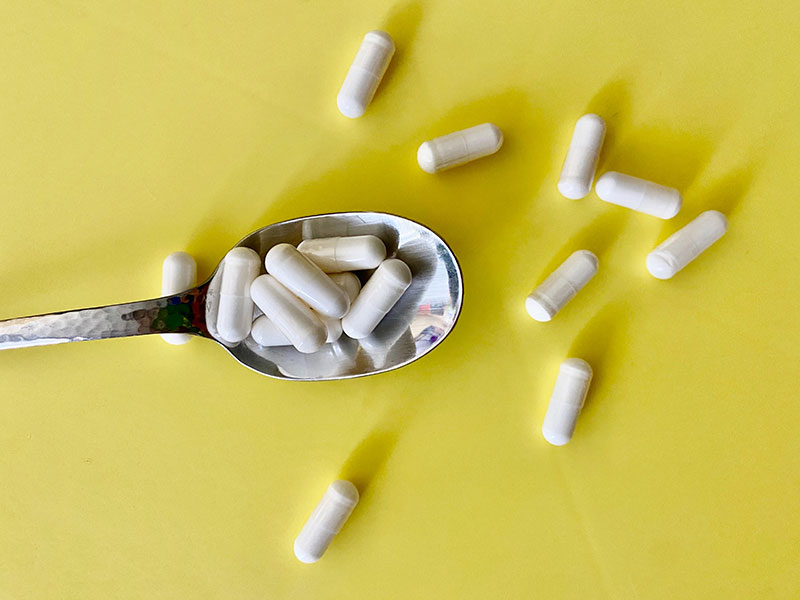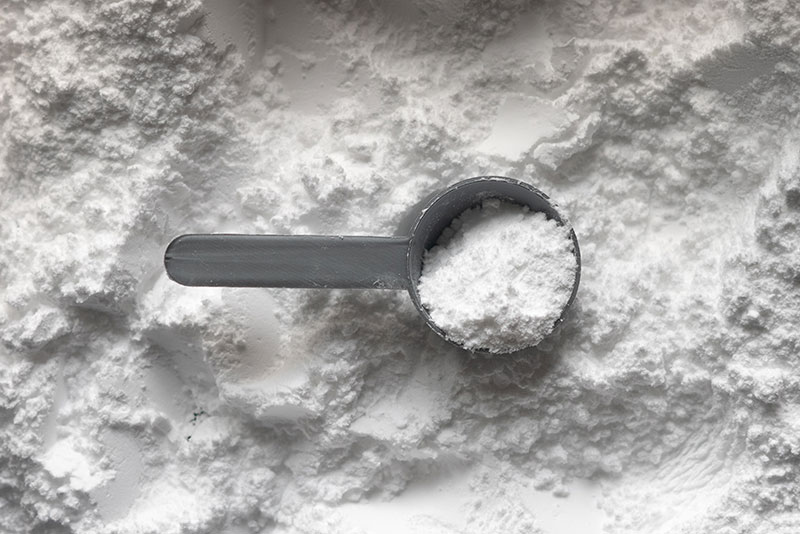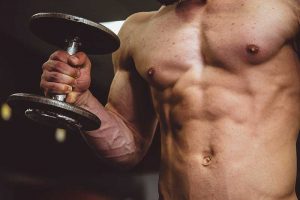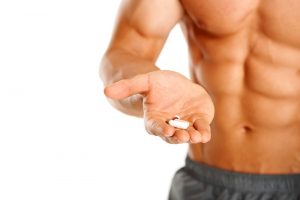We’re all familiar with pre-workout formulas, whey protein, electrolytes and recovery drinks. The market has plenty of muscle-boosters available for bodybuilders looking to get stacked. Then, there’s creatine powder. Which is in an entirely different league.
You’ve probably heard of creatine – or creatine monohydrate – before. It’s typically found in powder form, as well as creatine pills, capsules, baked goods and chewables.
Creatine for bodybuilding is a popular go-to, thanks to its muscle-building capabilities. Whether you’re trying to get shredded or simply get in better shape, the results of creatine are difficult to ignore. But let’s take a closer look at the benefits of creatine first.
What is creatine?

Many don’t realise it, but creatine monohydrate is actually produced naturally by your body. Your body is a powerful organism and is capable of many incredible things – many of which, we don’t even realise.
Also Read: Legal Steroid Alternatives
Stored in your muscles, creatine is needed the most when you’re busting out heavy lifts during your gym sessions. It’s no wonder creating and bodybuilding go hand in hand. Creatine also works to support the production of adenosine triphosphate – or ATP.
To better explain how ATP works, think of it as the fuel for your muscle cells. Dissimilar to glycogen – which comes from carbohydrates – ATP is used as a more general energy source. That means you don’t have to be cranking out those heavy lifts to use it. You could be doing any type of activity. However, ATP is required much more during anaerobic activity, such as sprint training or heavy weight training.
That feeling of being winded during exercise is where creatine will give you a helping hand. Creatine benefits your body by helping you push through those extra reps, lift heavier weight or complete an extra lap during running.
It comes as no surprise that many fitness plans are filled with protein. When you bring high protein foods into your diet, such as eggs, chicken and beef, they support your body’s production of creatine. This reasonable level of creatine will aid your usual workout. When it comes to creatine and bodybuilding, however, that ‘reasonable’ amount isn’t quite up to the challenge.
So, how do you get a more than a decent dose of creatine? Supplements. There are many benefits of creatine monohydrate for bodybuilding. But let’s explore a little more.
What does creatine monohydrate do?
As we’ve already covered, one of the main benefits of creatine is the extra power it supplied to lift weight. But there’s more. Although that’s one of the main benefits of using creatine for bodybuilding, there’s more to be discovered. Beyond more intense workouts and extra muscle growth, what else can creatine do?
These benefits kinda come hand-in-hand with what we’ve already mentioned. By increasing your muscle growth, your metabolism will get a boost, too. With a faster-acting metabolism, you’ll be burning more fat and keep yourself lean. But don’t worry, alongside the harder workouts and extra weight, creatine can also help speed up your recovery time.
While creatine for bodybuilding will help you get ripped, there’s still more to mention. With studies revealing that creatine may reduce the risk of neurological disorders in later life, such as Alzheimer’s disease.
It’s clear to see the benefits of creatine monohydrate, in bodybuilding and beyond.
How is creatine taken?
If you’re new to taking creatine, there’s a process referred to as the ‘creatine loading phase’ when you first begin. This space of time is where it is recommended to take a higher dose, to essentially stock up your stores.
Since we’ve covered what creatine monohydrate actually does, it’s about time we tell you how much to take. For the correct dosage, follow this rule of thumb. While loading creatine, the perfect amount to take daily is 20 to 25g – taken for 5 to 7 days. After that period of time, maintaining those creatine levels will mean taking closer to 5g daily.
Creatine advice: During the creatine loading phase, be sure to separate your servings throughout the day. Don’t go downing your daily dosage in one, instead, space this daily amount into a dose every few hours.
During maintenance, creatine works best when paired with a quick-absorbing carbohydrate such as honey or juice. This helps carry it to your muscle cells alot quicker.
Straight after your workout, creatine is absorbed by your body a lot faster. Utilise this time frame to get maximum results.
But is creatine loading totally necessary? In short, no, but if you skip this phase you’re going to have to wait a bit longer to see results. With all that being said, you’re now probably questioning the right time to take creatine. Don’t worry, we’re going to tell you everything you need to know.
Before or after a workout: When should you take creatine?
Now you’re clued up on the benefits of creatine for bodybuilding, it’s time to work out when is best to take it. The truth is, creatine can be best utilised both before and after your gym session. Doing this means you get a boost before working your muscles hard, and another to help speed up recovery time.
Why not reap the benefits of creatine both ways?
Things to pay attention to
Can creatine have a huge impact on your workouts? Yes, it can. Is creatine safe to use? Another yes. Does it really work? Well, here comes your third yes. However, like anything, there are a few precautions to pay attention to.
Creatine volumizes your muscles, meaning it sucks water into them. When you’re in your initial loading phase, this can occur in your stomach – causing a bit of a bloat, or ‘creatine weight gain’ as it’s often called. If you start to feel like you’re getting a bit full out front, lighten your loading dose and extend your loading phase.
For example, instead of a 25g daily dose, cut back to 10mg and extend your loading period to a couple of weeks. If you’re still feeling the creatine bloat, cut your creatine dosage even more and space the phase out even further. Pay attention to your body – it may take a little trial and error to get the dosage just right.
Before getting too carried away, take a look at your diet. If you eat a lot of pork and red meat, you may already be consuming a good amount of creatine. If you eat a lot of these meats, you may not need as much creatine as you think. If you prefer a vegetarian diet, the chances are, you’ll need the full recommended dose.
Muscle gains and recovery time aside, there is one last thing to consider. Hair loss. One study from the National Institute of Health showed rugby players taking 25g of creatine daily over a three week time period experienced a rise in dihydrotestosterone (DHT) levels after just 7 days. This is known as the chemical responsible for male pattern baldness.
However, while this study shows hair loss could be possible, there is more than enough room left for further research. There is little detail surrounding the study itself and the diet of its participants, as well as what their genetic predisposition was to hair loss. Plus, at only three weeks long, there’s definitely more to be done. A potential short-term rise in DHT could have reduced after a while in the maintenance period.
Conclusion
The rare side effects are most certainly outweighed by the benefits of creatine monohydrate for bodybuilding. Whether you opt for creatine pills, capsules, supplements or powder, it can definitely help you boost your workouts. And with little risk of side effects, you can experience intense workouts without the stress.















